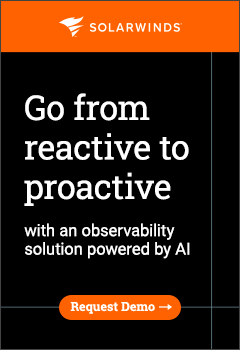 By Sascha Giese, Head Geek, SolarWinds
By Sascha Giese, Head Geek, SolarWinds
The task facing government departments and agencies as they progress towards their digital transformation objectives cannot be underestimated. For the IT professionals involved, it requires modernising their operations, applications, and databases while leveraging hybrid and multi-cloud deployments. And all of this must be done while supporting existing traditional workloads and systems.
In case this isn’t complex enough, the temporary shift to hybrid working in response to COVID-19 now appears to be a permanent fixture as civil servants prefer the flexibility of working from home.
All of this points to one thing: managing the IT systems of public sector organisations is becoming increasingly complex. And in a bid to manage these complex, diverse, and distributed environments, IT teams have amassed various monitoring and management tools across different teams to deal with the added complexity.
Tackling the tool sprawl
The problem is this has led to tool sprawl making life at the sharp end of IT delivery increasingly difficult to manage.
As a result, IT Ops, DevOps, and SecOps teams increasingly receive more alerts—coupled with disjointed analytics—making it difficult to access the actionable insights they need to quickly identify, prioritise, and resolve issues in business-critical services.
These disparate tools can also be cumbersome to implement and manage. As a result, they can become costly to maintain and scale, which in turn creates operational and business risks.
In other words, tool sprawl acts as a drag on the ability of IT teams to carry out their everyday tasks. What should be relatively straightforward becomes increasingly complex and leads to a downward spiral of performance and productivity.
One long-term solution is observability, a technology that provides insights, automated analytics, and actionable intelligence across on-premises and multi-cloud environments. Increasingly, it’s being adopted because it simplifies the monitoring and troubleshooting process by centralising data collection thereby making it more advanced and efficient.
It was a point picked up in a report last year which sought to gain a deeper understanding of the problems facing IT professionals. The SolarWinds IT Trends Report 2022—Getting IT Right: Managing Hybrid IT Complexity explored how the burden of more complex IT management has impacted the ability of IT teams to support organisations.
Observability as a solution
The report provided an insight into tech professionals’ confidence in managing modern IT
environments with the tools and skills at their disposal, the resources their organisations plan to invest in both management solutions and training in the future, and the IT team’s ability to promptly deliver meaningful projects.
One of the key findings was how IT professionals are concerned about a lack of confidence in their ability to manage today’s hybrid IT environments. Even more worrying, most IT professionals believe ROI has been impacted due to increasing IT complexity.
When asked specifically about the top drivers of increased complexity, 42% blamed the addition of new tools and/or technologies. At the same time, 32% cited the lack of proper tools to manage complexity.
And when pressed on how this greater level of complexity could be addressed, 46% said more staff training and upskilling, 44% said adopting IT monitoring and/or management tools — while 43% said investing in automation tools.
Greater complexity leads to a drop in confidence
These survey results echo what I’ve witnessed first-hand when I speak to IT professionals in the public sector. Often, people tell me that the level of IT complexity is growing at an unprecedented scale. Tool sprawl — among other issues such as increased security threats — is a symptom of that problem.
One person told me that things had got so bad they wanted simply to “reduce operational noise” so they could get on with doing their job.
There is little doubt that as each year ticks over more tools and technologies add a new layer of sophistication—or complexity, depending on your viewpoint—to government systems.
That’s why observability is being extended across hybrid and cloud environments to make tool sprawl become a thing of the past. Not only does it make management easier, but it also reduces the total cost of ownership.
The real concern, though, is what happens if tool sprawl is allowed to get out of hand. Should that ever happen, IT professionals will be held hostage by the solutions that were designed to help them. This simply cannot be allowed to happen.






Recent Comments